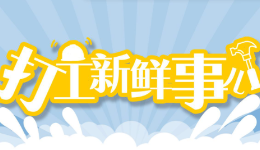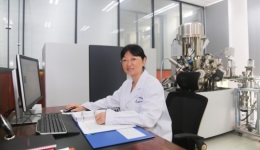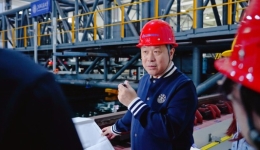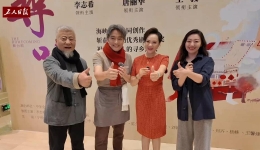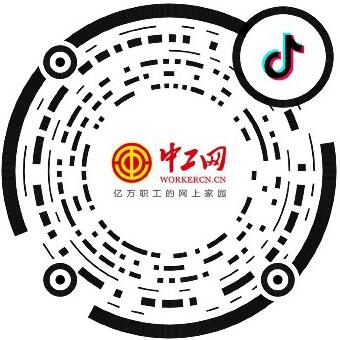Original title: Tibet, soaring against the wind in the new era (theme)
——Written on the occasion of the 73rd anniversary of the peaceful liberation of Tibet (subtitle)
People's Daily Online reporter Wu Yuren
In the Potala Palace Square, red flags hunt. Under the blue sky and white clouds of the snow covered plateau, the Monument to the Peaceful Liberation of Tibet stands majestically.
"Without the peaceful liberation of Tibet, there would be no happy life for us now." The 73 year old Bassan old man sat in the yard of his two storey Tibetan style residence, basking in the sun and drinking buttered tea, enjoying himself.
May 23 is the 73rd anniversary of the peaceful liberation of Tibet. On that day 73 years ago, the Agreement between the Central People's Government and the Tibetan Local Government on the Measures for the Peaceful Liberation of Tibet was signed. With the People's Liberation Army entering Tibet, Tibet has since embarked on a glorious journey towards prosperity and progress.
From the Lhasa Valley to the foot of Mount Everest, from the Qiangtang Grassland to the Green Sea and Nyingchi, from the Tibetan Dongchangdu to the Yalong River, under the strong leadership of the Communist Party of China, all undertakings in Tibet have made all-round progress, and the snow covered plateau is full of new era development.
The new life spirit and culture are rich and colorful
At eight or nine o'clock on the morning of May 12, the folk activity area of Zongjiao Lukang Park at the foot of the Potala Palace in Lhasa was bustling. Citizens dressed in colorful Tibetan costumes were singing and dancing here. With a cheerful rhythm, Tibetan folk dance Guozhuang began. The neat dance steps and elegant dance movements ignited the atmosphere of the scene, and people's faces were filled with happy smiles. Many passers-by and tourists stopped to watch, and sometimes people participated in it.
The 65 year old Zhaxi Pingcuo was hale and hearty. After he had jumped a section of Guozhuang, he was not angry and was elated. "My physical quality is much better now than before. I haven't even caught a cold in the past few years. I've also met many new friends here, and I live happily and fully every day."
Under the leadership of the Communist Party of China, the cultural and artistic enjoyment that only three major lords could have in old Tibet returned to the people, and the spiritual life of the people of all ethnic groups in Tibet was constantly enriched.
"The civilized practice activity place in the village is equipped with a volunteer service station, a theory lecture room, a library, a chess and card room, and a fitness room, so that both the elderly and young people can find their own 'amusement park' here." Basang Ciren, a 45 year old villager in Zhuo Village, Dongga Town, Lang County, Linzhi City, is borrowing books from the library. He said that the library has a complete range of books, covering the economy, party building Education, children's literature and other categories, the villagers' spiritual and cultural life is very rich.
In recent years, Tibet has been guided by the needs of the masses and aimed at improving the cultural life of the masses, striving to provide the masses with richer, more convenient and more "right" cultural products and services.
Various exhibitions held by museums, cultural centers and art galleries enable people to enjoy a rich cultural feast; People can enjoy free cultural and artistic training at home without leaving the village; The cultural performances held in the parks for the benefit of the people have made people's literature and art shine... Today, in Tibet, there are libraries and cultural centers in the counties, and comprehensive cultural stations in the villages and towns. A network of public cultural services covering urban and rural areas has taken shape, and people enjoy more convenient public cultural life.
New development One, two, three, produce strong wind
In the valley of Jieba Village, Jieba Township, Naidong District, Shannan City, bees are swarming and busy. A young man wearing a gauze cap is walking among hives - he is the beekeeper Zhang Liangfu.
In 2016, Zhang Liangfu came to Tibet from Guizhou with 20 hives and a tent, and took root in Shannan, a vast source of honey, to develop his "sweet" career. This is a two-way rush. Shannan City has sent the "sweet industry" to nearly 5000 households in 7 counties and districts by introducing bee breeding enterprises and cultivating local enterprises. Relying on this "sweet" cause, Shannan City has successfully created Tibet's wild flower honey, wild flower royal jelly, honey mask and other characteristic superior products. The annual output of high-quality honey has exceeded 300 tons, and the output value has exceeded 100 million yuan, driving the income of nearly 18000 local people.
"I didn't expect to make more money by keeping bees than by going out to work." Puba Zhandui, a villager, told reporters, "Just take care of bees in June August when flowers bloom, and you can earn more than 10000."
Today, the plateau featured bee breeding industry has become an important way to revitalize the rural areas in Shannan and increase farmers' income.
Snow covered highland barley, plateau yaks, Motuo tea... From the wheat fields in Shigatse, to the herds of cattle and sheep in the Qiangtang grassland, to the verdant tea mountains in Nyingchi, the colorful plateau characteristic agriculture and animal husbandry landscape in Tibet is becoming more and more dazzling.
In old Tibet under the feudal serfdom, there were no industrial enterprises in the modern sense. In the past 73 years, Tibet's modern industry has grown from scratch, from small to large, and has initially formed an industrial production system with Tibetan ethnic characteristics. Clean energy, Tibetan medicine, green mining, natural drinking water and national handicrafts have developed rapidly.
There was no road in old Tibet. Today, focusing on road construction, aviation, railway and pipeline transportation have developed rapidly, forming a transportation network with Lhasa as the center and extending in all directions. The picture shows Lalin high-grade highway. Photographed by Ciren Luobu, reporter of People's Daily Online
There was no road in old Tibet. Today, focusing on road construction, aviation, railway and pipeline transportation have developed rapidly, forming a transportation network with Lhasa as the center and extending in all directions. The picture shows Lalin high-grade highway. Photographed by Ciren Luobu, reporter of People's Daily Online
The 82 year old Gesang, who lives in Dangba Community, Chengguan District, Lhasa, witnessed the great changes in Tibetan industry after the peaceful liberation: "In the old days, people said that we could not make an iron nail or a packet of matches in Tibet. Now, let alone nails and matches, we can build high-rise buildings, bridges and power stations."
Not only traditional industries, but also modern commerce, cultural tourism, catering services, etc. unheard of in old Tibet, have now become an important growth pole for high-quality economic development in Tibet, and the brand influence of "the third pole of the earth" has been rising. In 2023, Tibet will receive more than 55 million tourists from home and abroad, and its total tourism revenue will exceed 65 billion yuan, both of which will hit a record high.
People's life is flourishing in the new era
In the centralized support service center for the poverty-stricken people in Lazi County, Shigatse City, the elderly sit in the yard in twos and threes, basking in the sun and chatting happily.
"I'm old and have no family, so I didn't expect to enjoy free centralized support here." Talking about the current life, the 76 year old Qiongla sighed with great emotion, "When I was a serf, I didn't have enough food and clothing, and suffered a lot. Now I can enjoy my old age, and food, housing, clothing, transportation, and medical care are free!"
Qu Sang, the manager of the centralized support service center, said, "There are also medical rooms, sun shed activity corridors, recreation rooms, fitness rooms, etc., which can meet the needs of the elderly in their daily lives."
After the peaceful liberation, with the increasing investment of the central government, the development dividend benefited all farmers and herdsmen in Tibet, and the living conditions of the vast majority of the people have undergone earth shaking changes.
Before the peaceful liberation, Tibet did not have a school in the modern sense, and modern science and technology was even more blank. Now, when entering the teaching building of Lhasa No. 1 Primary School, the corridor is clean and tidy, the classroom is spacious and bright, and electronic blackboard, heating, multimedia equipment, etc. are all available. All children are full of energy and concentrate on listening to the teacher.
Opening the national education "account book", since the 18th National Congress of the Communist Party of China, Tibet has invested 293.6 billion yuan in education, promoting the establishment of a modern education system covering pre-school education, basic education, vocational education, higher education, continuing education, special education, etc., and implementing 15 years of free education.
It is not only education that has undergone tremendous changes.
——Before the peaceful liberation, Tibet had only three government run Tibetan medical institutions and a small number of private clinics with rudimentary equipment. Today, Tibet has established a sound medical service system, and medical and health networks covering maternal and child health care, disease prevention and control, Tibetan medicine and Tibetan medicine are spread throughout urban and rural areas.
——In 1950, Tibet had a population of 1 million, of whom 900000 had no housing. At that time, there were only 20000 people in the urban area of Lhasa, while there were more than 1000 poor people and beggars living in the streets. Now, through the implementation of a series of projects such as farmers' and herdsmen's housing, urban and rural security housing construction, from the northern Tibetan grassland to the Yalong River Valley, from the hometown of Zhang Xiong to the bank of the Niyang River, there are new Tibetan style houses everywhere.
…………
The development is moving forward and people's livelihood is getting warmer. Tibet insists on improving people's livelihood and rallying people's hearts as the starting point and end result of economic and social development. In recent years, Tibet has spent more than 80% of its fiscal expenditure on agriculture, forestry, water, education, health care, housing security and other key areas of people's livelihood. Today, a social security system covering all urban and rural residents, with the five major insurances of pension, medical care, unemployment, work-related injury and maternity as the main body, has been fully established. The people of all ethnic groups have access to education, education, work, medical care, elderly care, housing, and support for the weak. The people's lives have improved in all aspects. Tibet's social outlook is changing with each passing day, and people's lives are thriving.




